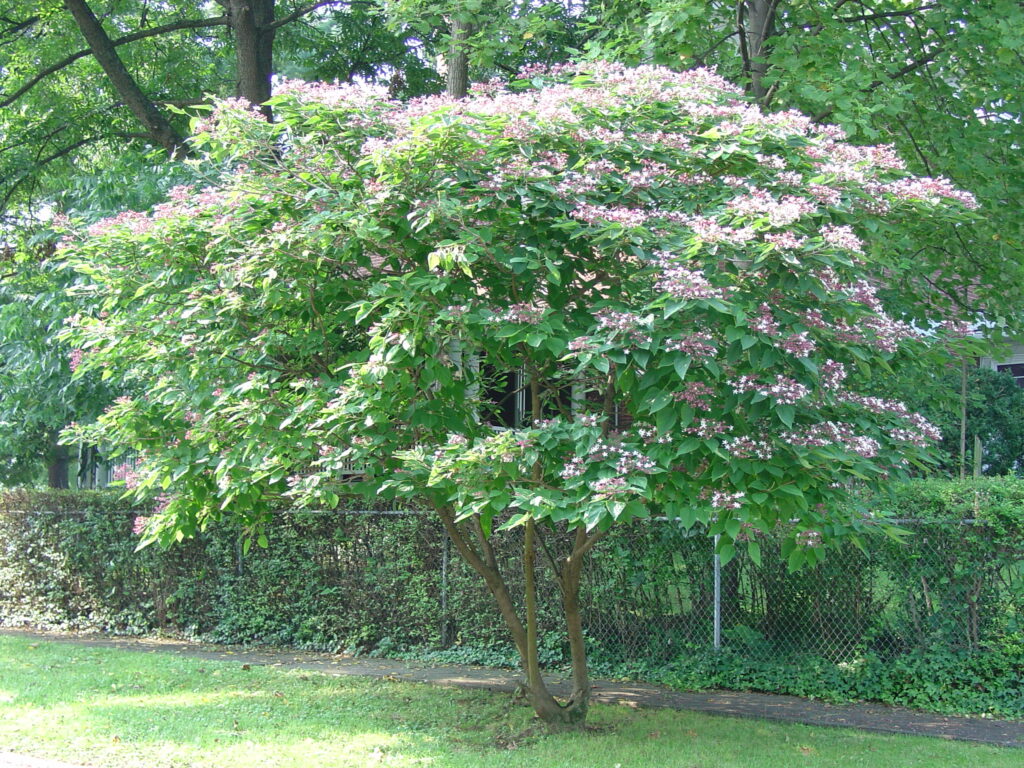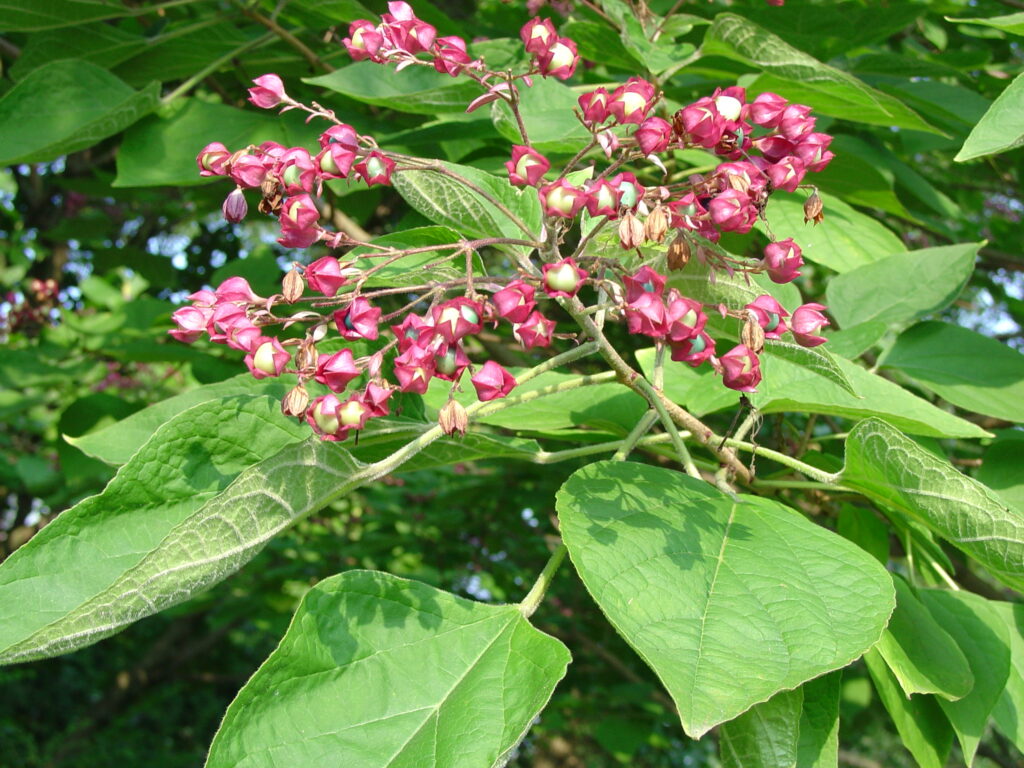Harlequin Glorybower (Clerodendron trichotomum) is a rambling 15-foot-tall rambling shrub which can be easily shaped into a multi-stemmed 10-to-20-foot small tree. Glorybower shines in the late summer and early fall landscape. Its sweetly scented, very showy flowers attract the attention of gardeners as well as hummingbirds and butterflies. (USDA hardiness zones 7-10).

Where I garden in Northeast Tennessee (USDA zones 6-b and 7), glorybower is at its northern cold hardiness limit. An occasional harsh winter will bring on lots of pruning repair. here, some winters do not treat glorybower kindly. Significant reconstruction may be needed. Moderate pruning in late winter repairs most ills with fast growing glorybower looking great by summer.
Sweetly fragrant, white flowers smother the plant from July through August. Flowers are arranged in wide 6 – 9-inch clusters, comprised of individual white 1½ inch blooms and are borne on current season’s wood. Next up, in mid-September, the metallic looking topaz-colored fruits with beet red calyxes provide quite a show. Flowers are initiated on current season wood.
Foliage texture is bold with broad 4- to 9-inch-long dark green leaves providing cooling shade to a nearby deck or patio. Its pale-yellow autumnal leaf color offers little interest. Glorybower is rated disease, insect, and deer resistant. Expect to observe a few hummingbirds fluttering around summer flowers.

Glorybower grows in a moist well-drained average soil and in full to partial (minimum 6- hours) sunlight. A 2-year old established tree is only moderately drought tolerance and requires irrigation during long dry spells.
On a recent trip to Portland, Oregon, glorybower serves as a yard and street tree. Interesting fact: leaves when crushed emit a peanut butter aroma. Native of Japan and China this under-planted tree is sold primarily by on-line specialty nurseries.

 Posted in
Posted in 
